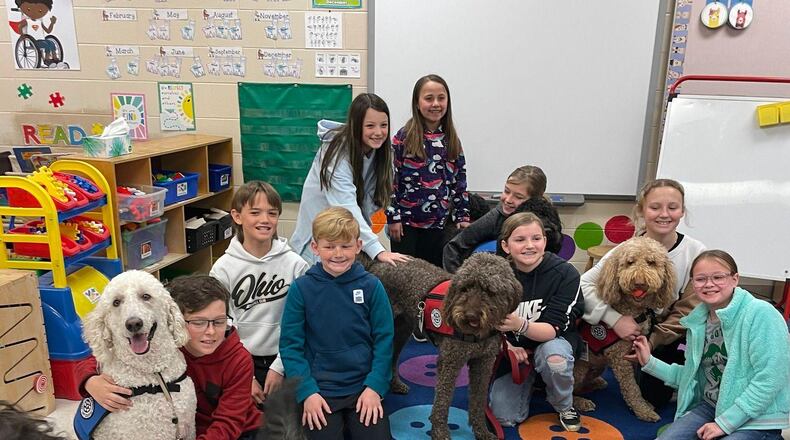Prevention Action Alliance launched the academy last fall, with funding from the Anthem BlueCross and BlueShield Foundation through a $500,000 grant. This year has been about identification and planning, while the next two years will be for implementation.
The program will provide school districts with a $9,000 stipend ($3,000 a year), training and resources to implement a multi-tiered system of student-targeted prevention and wellness support that is “culturally responsive, effective and sustainable.”
“While awareness has improved in recent years, the data around behavioral health issues faced by school-age children clearly show we still have much work to do in the U.S.,” said Dr. Elizabeth Bonanno, behavioral health medical director for Anthem Blue Cross and Blue Shield in Ohio. “The Prevention Action Alliance’s work to proactively address these concerns, giving schools tools and resources for early identification, is vital to turning these trends around.”
Mental health issues continue to grow and schools are experiencing those struggles firsthand as teachers and faculty are seeing an increase in behavior issues, substance use and more violence and aggression. Districts recognize the need for mental health resources, but sometimes lack access to those.
Among youth ages 12 to 17, 20% experienced a major depressive episode and 3.3 million had serious thoughts of suicide in 2021, according to the Substance Abuse and Mental Health Services Administration.
In Ohio, 13% of kids ages 3 to 17 had anxiety or depression in 2020, which is a 42% increase from 2016, according to the Annie E. Casey Foundation, which is a nationwide network that tracks the wellbeing of children in the U.S.
Northeastern and Springfield schools, as well as Elgin Local and Pleasant Local schools, were selected out of seven schools to participate in this program.
Each district will decide how they use the funds, but they must be used to support their work and involvement with the academy, such as to pay for staff time if working on academy projects outside of their contracted work hours, supplies, evidence-based social-emotional learning (SEL)/substance misuse prevention curriculums, travel expenses for academy events and more, according to Leah Blewitt, marketing and communications coordinator for the Prevention Action Alliance.
“This is an innovative step towards a better future. By prioritizing social-emotional learning, mental health, and wellness, the district aims to create a baseline of needs and provide interventions to empower students and staff. Together, we will identify and provide resources to support a stronger, healthier community,” said Steve Linson, Northeastern’s director of pupil services.
Martin Johnson, Springfield’s coordinator of psychological and mental health services, said this partnership will continue to help the district strengthen its focus on students’ social-emotional learning.
“This partnership will allow our district to fortify our knowledge base by asking questions about what is working in other districts, unifying our district message and utilizing this platform as an invaluable resource to brainstorm and troubleshoot ideas as we plan out additional SEL resources in our classrooms and buildings,” he said.
The goal of this program is for schools to enhance or implement data-driven and sustainable practices and evidence-based strategies related to student behavioral health through a comprehensive support structure, also referred to as a multitiered system.
“By the end of the pilot program, they will each have developed a comprehensive structure to identify and address their student’s mental health and social-emotional learning (SEL) needs at all three tiers of a multi-tiered system of support; a plan to support staff in deepening their understanding and developing their skills in key prevention and wellness competencies; and a data-driven process to evaluate the effectiveness of these programs and strategies,” Blewitt said.
Each district assembled a team to lead the academy for their school system. The teams have gathered benchmark data to identify their current strengths and opportunities for supports by laying out tools and process to begin implementing their systems this fall.
Northeastern has a team of four people, including Zack Dobbelaere, principal at Northeastern; Margaret Miller, guidance counselor at Northeastern; Cassidy Koewler and Carrie McGuire, both mental health therapists.
The Prevention Action Alliance is excited to see these schools take the initiative to implement additional prevention and wellness supports for their students.
“Schools across Ohio are experiencing an increase in mental health disorders regardless of location and socioeconomic status,” said Fran Gerbig, executive director of Prevention Action Alliance. “A growing body of research shows these types of programs contribute to positive outcomes in many realms of students’ lives, including academic achievement, career readiness, and reduction in risky behaviors such as substance misuse.”
Prevention Action Alliance, a non-profit organization that leads communities in the prevention of substance misuse and promotion of mental health wellness, launched the program in collaboration with Education Development Center and Miami University’s Center for School-Based Mental Health Programs.
About the Author

